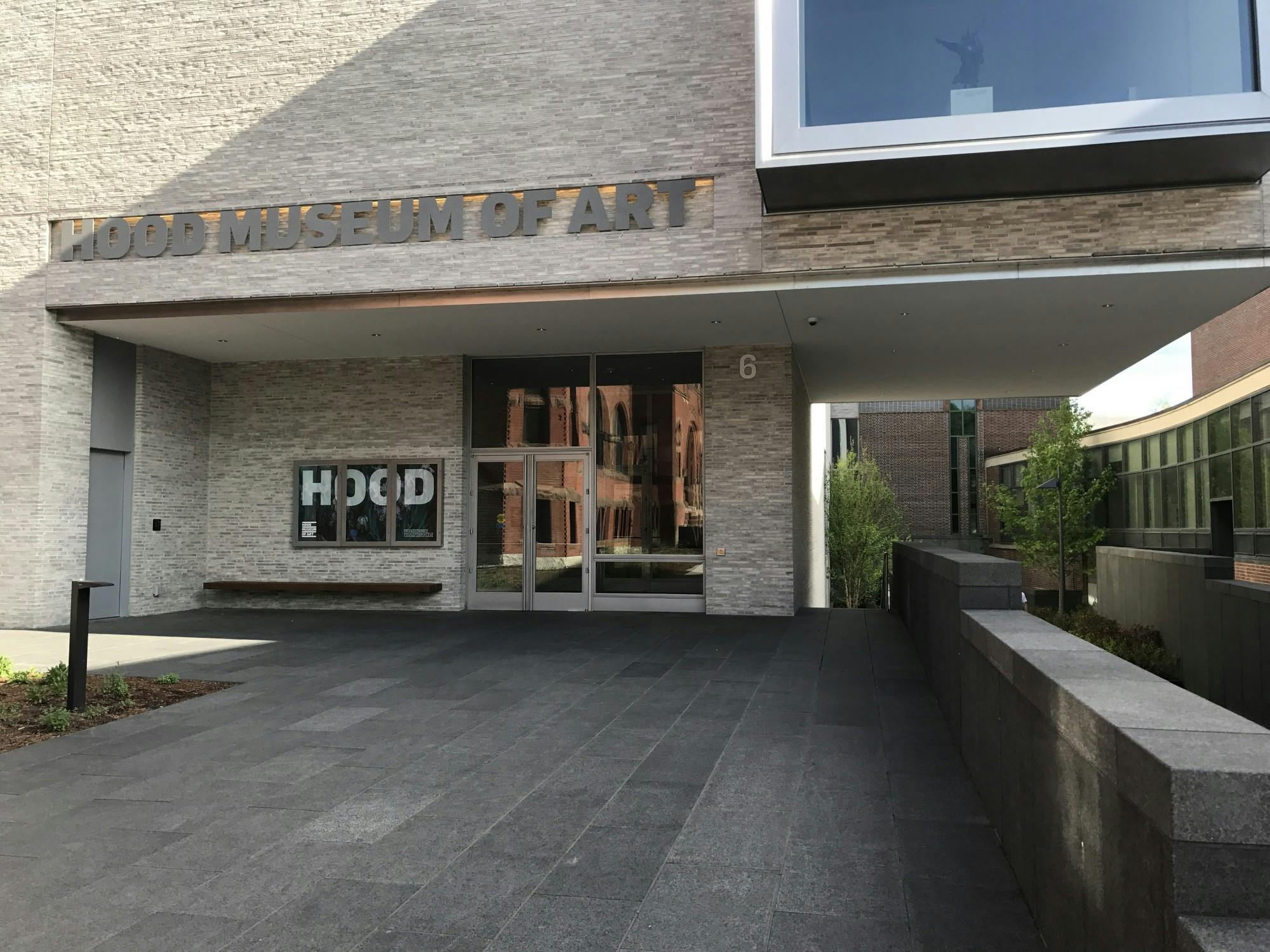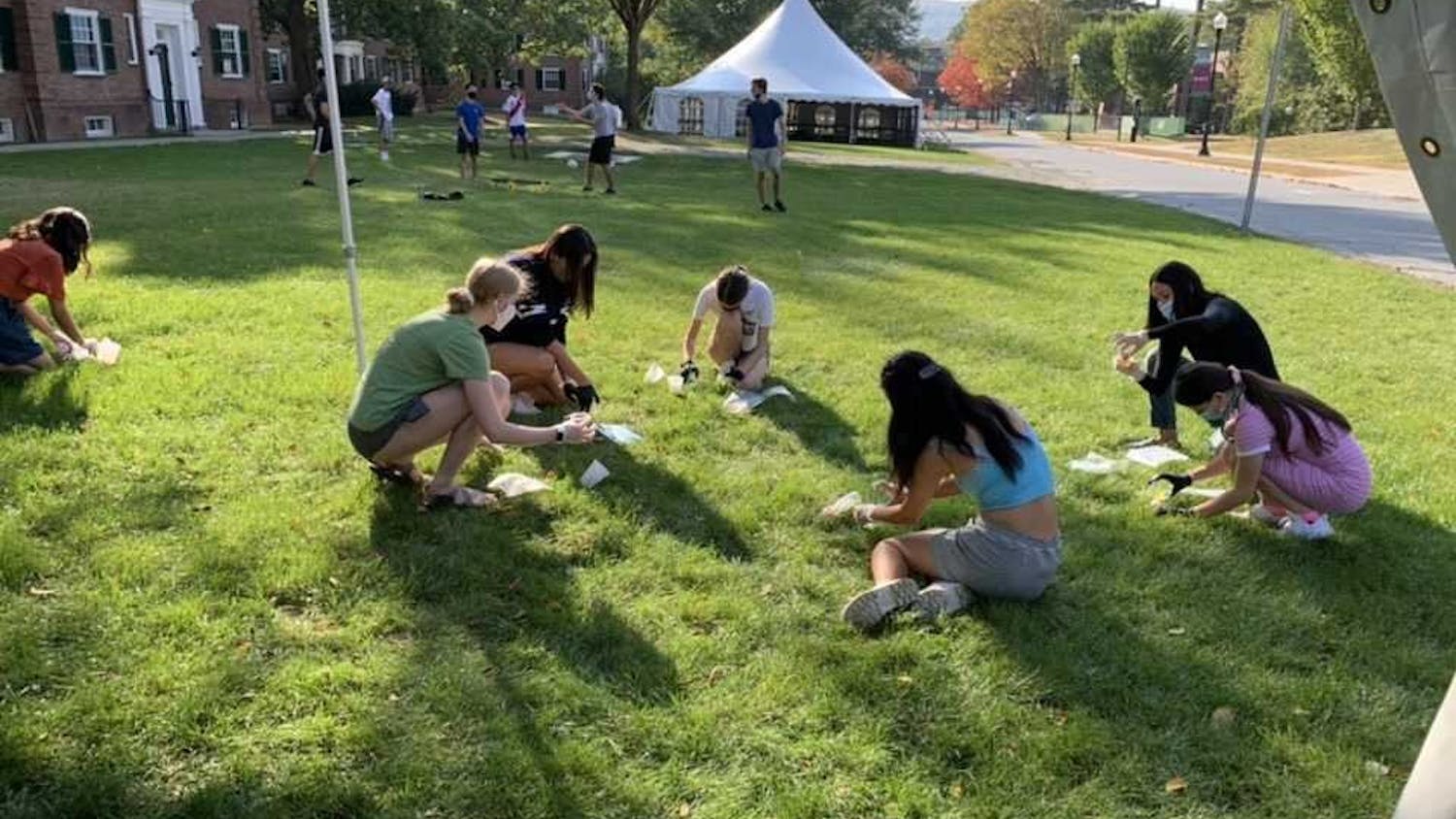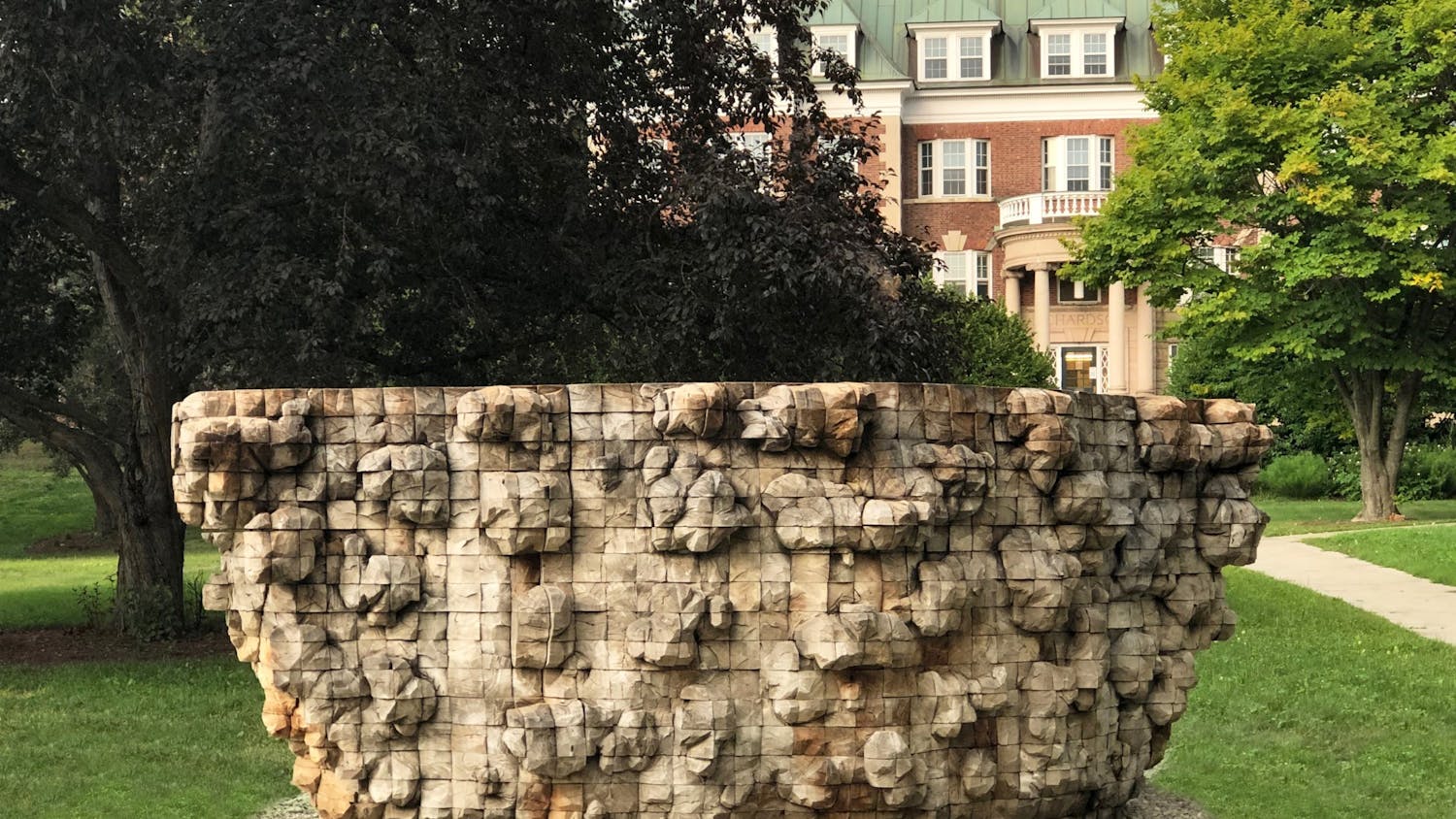Whether on or off campus, art enthusiasts now have the chance to browse Dartmouth’s public art collection thanks to the Hood Museum of Art’s new remote escape room game, “Escape to the Outdoors.”
The fully virtual escape room game features digitized imaging of six sculptures in Dartmouth’s collection of public art installations. The immersive experience will allow students, faculty members and the larger Hanover community to safely explore public art at Dartmouth through a series of puzzles, riddles and codes.
The game, which launched on the Hood’s website earlier this month and will be featured at the Hood’s “Virtual After Dark” event this Thursday, is designed to be played either individually, with friends over Zoom or on campus with a mobile device, according to Hood campus engagement coordinator Isadora Italia. The storyline unfolds with a performance artist arriving at Dartmouth, who pranks students by removing the labels on Dartmouth’s public art installations. With a set of clues left behind by the artist, players solve puzzles and cryptic challenges to discover the meaning behind all six sculptures and successfully return the labels.
Italia said that the Hood team adapted the escape room style game idea from a successful in-person escape room held last year in the “Assyrian Relief” collection at the Hood. By using public art as the focal point, they hoped to create a game that could comply with current COVID-19 safety protocols, being both fully virtual and having an outdoor option for students on campus.
Italia expressed hope that students living both off and on campus will take advantage of the virtual setting to safely engage with public art.
“A friend group that’s scattered around the world could get on a Zoom call, get into little teams and breakout rooms and play it together,” Italia said. “We designed it very intentionally to be something that could be played on a mobile device in person on campus and remotely on a computer or tablet.”
Throughout the game’s development process, the Hood team performed several trial rounds with friends, museum staff members and two groups of students in order to observe how people tackled the game and make adjustments as they received feedback.
Alice Crow ’22, a member of the Museum Club, was one of the students who played both the in-person escape room game during the fall and tested out the new virtual version. Crow mentioned that the purpose of this game is to see Dartmouth’s art collection in a different light. She added that, as the game’s storyline suggests, few students take the time to appreciate the diverse art spread across campus even though they walk past these sculptures every day.
“I think right now it will give a nice outlet for people to see parts of Dartmouth and to engage with art in a way that the Hood would usually serve to do,” she said. “I think it's a way of reminding people that [the Hood] extends beyond the museum itself.”
Crow added that the game provides another layer to the Hood’s other virtual programming, as it is a fun and short activity that will still allow people to learn about the sculptures and engage with Dartmouth’s extensive art collection.
Hadley Detrick ’22, Museum Club member and social media assistant at the Hood Museum, also tested out the game prior to its release. Detrick said that the museum has done well to create content that attracts remote visitors of varying interests and engagement through their wide-ranging programming.
“A lot of our virtual activities have been diverse, and this is another example of them trying to keep people engaged in this virtual setting,” he said. “This one is a lot more interactive because you are placed in a team and actually talking to people, whereas other virtual events we’ve had include talks about the gallery.”
In addition, Detrick said that the virtual activity challenges players into thinking strategically and allows people to interact with art in a way that is both creative and intellectually stimulating. The game also keeps students connected to campus and the Dartmouth community from wherever they are currently located around the world.
“Each level of the game encourages you to look closely at the art and really take in everything that is on display,” he said. “The attempt was to interact with it and understand the historical significance of each piece of public art that we have on campus.”
Throughout the pandemic, the Hood has hosted several events through Zoom to engage with the public –– including gallery talks, sip and sketch evenings and writing workshops. Italia mentioned that as the Hood continued to move toward a remote setting, they wanted to develop activities that would remain a form of entertainment, while simultaneously educating their audiences on the collection.
“It's definitely something that we have adapted to and will continue to do so if it's necessary, probably into the future,” Italia said. “I think this [game] fits in nicely with what we've been doing — it's just a competitive activity as opposed to a museum lecture.”




